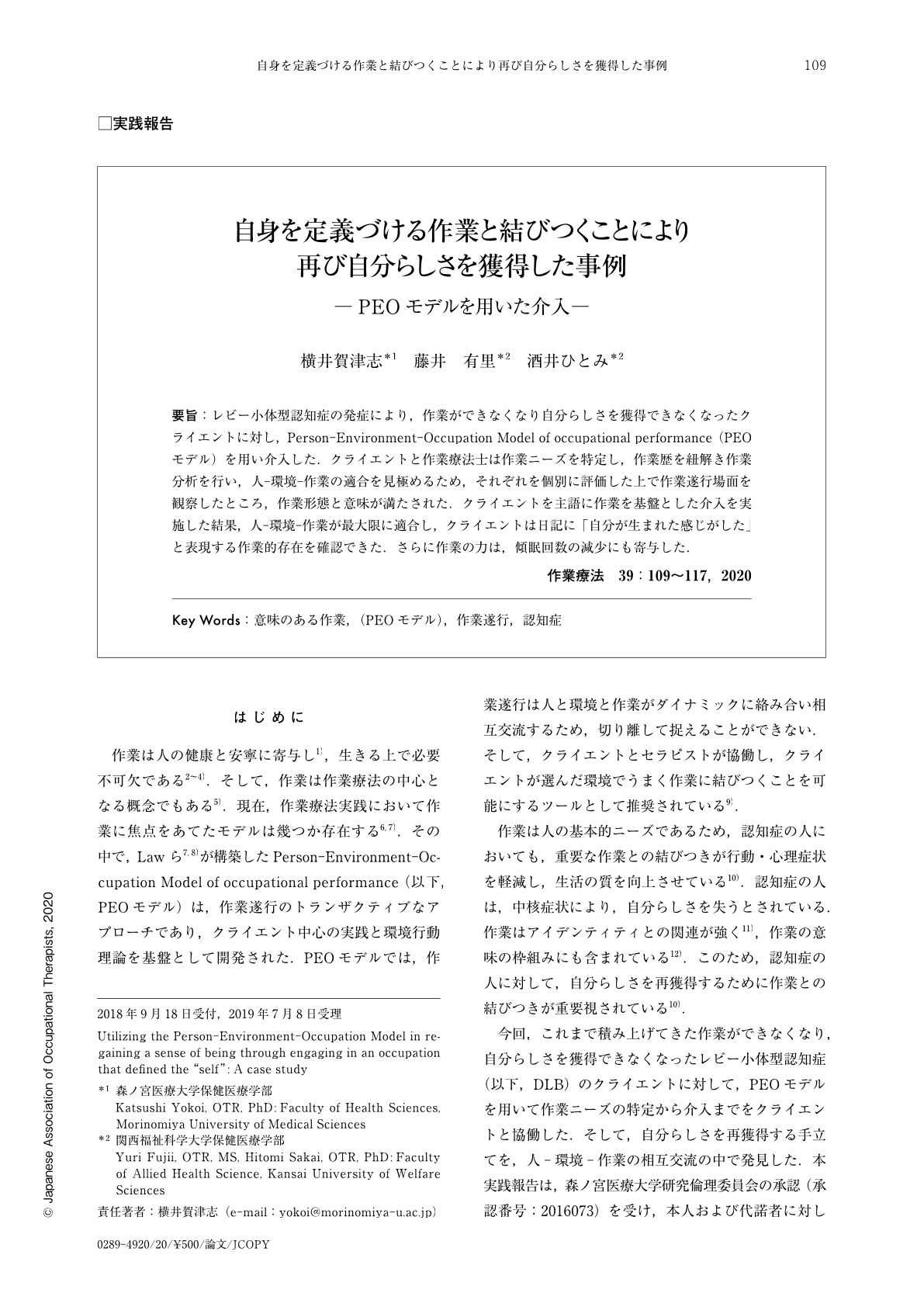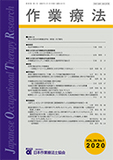Japanese
English
- 販売していません
- Abstract 文献概要
- 1ページ目 Look Inside
- 参考文献 Reference
- サイト内被引用 Cited by
要旨:レビー小体型認知症の発症により,作業ができなくなり自分らしさを獲得できなくなったクライエントに対し,Person-Environment-Occupation Model of occupational performance(PEOモデル)を用い介入した.クライエントと作業療法士は作業ニーズを特定し,作業歴を紐解き作業分析を行い,人-環境-作業の適合を見極めるため,それぞれを個別に評価した上で作業遂行場面を観察したところ,作業形態と意味が満たされた.クライエントを主語に作業を基盤とした介入を実施した結果,人-環境-作業が最大限に適合し,クライエントは日記に「自分が生まれた感じがした」と表現する作業的存在を確認できた.さらに作業の力は,傾眠回数の減少にも寄与した.
A case is presented according to the Person-Environment-Occupation (PEO) Model. The occupational history of a client with Lewy body dementia was elicited and the occupational needs of the client were identified. The occupational form, meaning, and function that the client wanted to engage in were subsequently investigated. Furthermore, client interactions in terms of person, environment, and occupation were analyzed. When actual occupational performance was observed, satisfactory occupational implication was subjectively confirmed from the client's perspective. With the client as the subject, an occupation-based practice was implemented. As a result, in a diary entry recorded after training, the client mentioned that “it felt as if the self was born”. Firm engagement between the client and the form, meaning, and function of the occupation led to a moment in which a sense of occupational being was regained. The occupational therapy had an effect on the client's daily life by contributing to decreasing the frequency of somnolence.

Copyright © 2020, Japanese Association of Occupational Therapists. All rights reserved.


